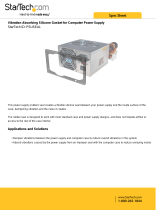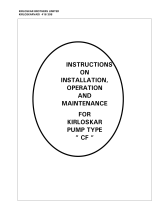CONTENTS
IOM manual CTI & CTH centrifugal pumps 3
2.3.1. Cleaning procedure .......................................................................................................... 14
2.4. Residual risks ............................................................................................................................ 15
2.5. Disposal after expiration of the expected lifetime ............................................................... 15
2.6. Waste of electrical and electronic equipment (WEEE) directive .......................................... 15
2.7. Actions in emergency .............................................................................................................. 15
3. MAINTENANCE ................................................................................................................................ 16
3.1. Inspections ................................................................................................................................ 16
3.2. Location of faults ..................................................................................................................... 16
3.3. Disassembly of the pump ........................................................................................................ 17
3.3.1. Disassembly procedure .................................................................................................... 17
3.4. Assembly of the pump ............................................................................................................. 19
3.4.1. Test run ............................................................................................................................. 23
3.5. Disassembly – 4FZ option ........................................................................................................ 23
3.6. Assembly – 4FZ option ............................................................................................................ 26
3.6.1. Test run ............................................................................................................................. 26
4. OPTIONS ................................................................................................................................... 27
4.1. Lubricated seal – 4Z ................................................................................................................. 27
4.2. Flushed seal – 4F (API Plan 11) ............................................................................................... 29
4.3. Heating / cooling jacket – 4J................................................................................................... 30
4.4. Hygienic shroud – M ................................................................................................................ 30
4.5. Pump drain – 4K ....................................................................................................................... 31
4.6. Long coupled execution – B .................................................................................................... 31
4.7. Semi-open impeller – 4H; Reinforced impeller – 4W ............................................................ 32
4.8. Reinforced pump casing – 4B ................................................................................................. 33
4.9. Increased number of mounting holes – 4O ........................................................................... 33
4.10. External quench – 4Q ............................................................................................................... 34
4.11. Mechanical seal options .......................................................................................................... 34
5. SPARE PARTS .................................................................................................................................... 35
5.1. Spare parts drawing ................................................................................................................. 35
5.2. Spare parts list .......................................................................................................................... 35
5.3. Spare parts drawing - options ................................................................................................ 36
5.4. Spare parts list - options ......................................................................................................... 37
5.5. Spare parts – long coupled execution .................................................................................... 38
5.6. Spare parts list – long coupled execution .............................................................................. 38
5.7. Recommended spare parts ...................................................................................................... 39
5.8. How to order parts................................................................................................................... 39























